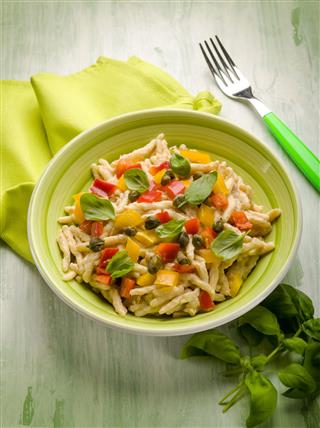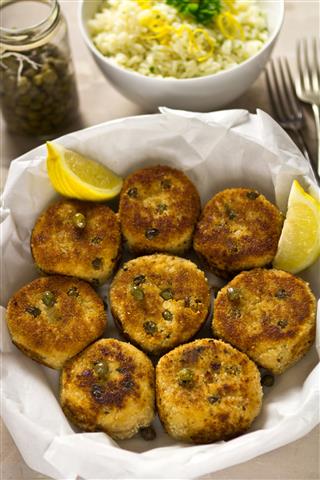
The caper is a shrub that grows a delicious combination of berries and flowers that are used in a lot of cuisines, as you are going to find out in these capers food facts that will follow.
We often get to taste capers in the form of an additive or a seasoning over many Italian and French dishes. Many bon vivants are simply crazy about the flavor that capers impart, that’s why they are the most common ingredient in Mediterranean cuisine. Caper berries are actually olive green in color and are about the size of a corn. Usually available in a pickled form, capers are an important commercial plant because almost all parts of the caper plant such as the flowers, buds, and leaves are used for medicinal and culinary purposes.
Capers Food Facts and Information
Taxonomy
The caper is a perennial spiny shrub that has fleshy, alternative rounded leaves and white-pinkish flowers. There are more than 150 species of the caper plant with a few of them being very popular spices in various cuisines.
Kingdom: Plantae
Division:Angiosperm
Class:Magnoliopsida
Sub-class: Dilleniidae
Order: Capparidales
Family: Capparidaceae
Genus: Capparis
Species:Spinosa
History
The caper plant has been used for medicinal purposes since the Romans and the Greeks were around. They used to prepare herbal tea to treat medical conditions like fibromyalgia or rheumatism, by using the roots and stems of the caper plant. One interesting capers food fact is that the plant is salt resistant hence, it enables it to sustain through extreme drought. This is probably the reason why capers thrived in the hot and arid Mediterranean regions of Algeria, Cyprus, Iran, and Greece, many of the southern European countries like Spain, Italy, France, and some parts of America like Florida and California.
Ontogenesis
The caper plant has an extremely deep root system that can adapt to the most dry regions and soil types. If not harvested properly, the caper berries dehisce and then the process of germination takes place in more favorable environmental conditions. Environmental conditions that favor capers are rocky soil that has an annual precipitation of 350mm, and good soil drainage. The plant also requires ample amounts of sunlight, capers can tolerate temperature more than 400C. Capers are not affected much by common diseases and pests. An interesting capers food fact is that the best caper berries are produced when plantation is performed in extremely poor soil. Hence, this should give you an opportunity to consider growing the caper plant in your own garden as it will require very little care!
Medicinal Usage
Capers are one of the most popular ingredients in herbal teas. The bark, leaves, and flower buds are used for treating various medical conditions that includes eye infections, irritable bowel syndrome, stomach pain, urinary dysfunctions, kidney diseases, flatulence, menstruation, and gastrointestinal problems. Capers are said to be a great help for body detoxification.
Culinary Usage
The color as well as the piquant and sour flavor of the caper is somewhat similar to that of green olives. Smaller caper berries are more aromatic than larger ones. Capers carry a hint of acidity along with a spicy and tangy flavor hence, they are very popular in cuisines that use salt and vinegar such as smoked salmon, salsa, salads, and pickles.
One useful capers food fact to take note of is that the term caper is referred to both the fruit as well as the flower of the caper plant, so the next time you’re out buying them, you know what to ask for. Caper flowers are hand harvested and then pickled using salt and vinegar. Caper flowers are more expensive due to the amount of effort it takes to prepare. The caper’s berries are smaller in size and are called nonpareil; they are favorites among food lovers and chefs due to their pronounced taste and delicate texture. These pickled caper berries are used in plenty for garnishing and seasoning various food recipes.
Caper Food Nutrition Facts
Now that you know what are capers, the following chart will describe the nutritional value of the berries per 100 g or 3.5 oz.
| Contents | Amount |
| Carbohydrates | 5 g |
| Energy | 20 kcal |
| Fat | 0.9 g |
| Dietary fiber | 3 g |
| Sugar | 0.4 g |
| Iron | 1.7 mg |
| Sodium | 2960 mg |
| Protein | 2 g |
| Vitamin C | 4 mg |
This concludes our information on what are capers. I am sure you will want to try out these little berries soon.





